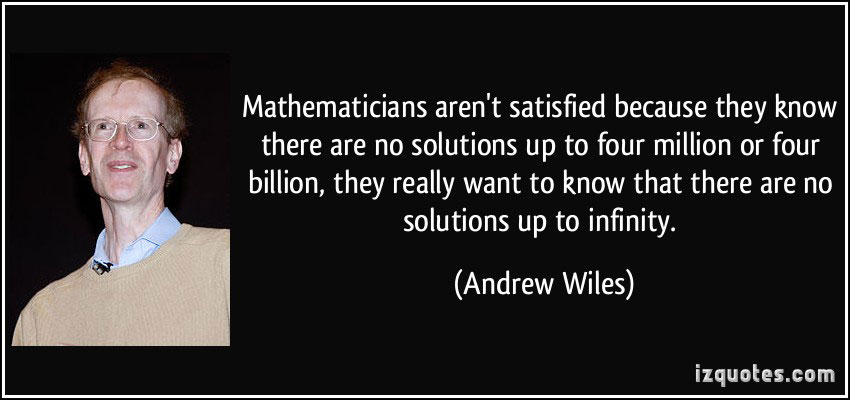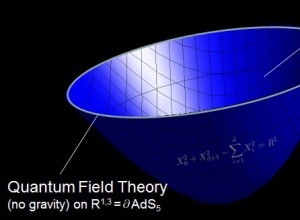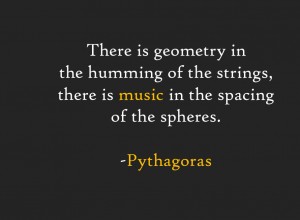This … is… magic: “The number 24 appearing in Ramanujan’s function is also the origin of the miraculous cancellations occurring in String Theory … each of the 24 modes in the Ramanujan function corresponds to a physical vibration of a string. Whenever the string executes its complex motions in space-time by splitting and recombining, a large number of highly complex mathematical identities must be satisfied. These are precisely the mathematical identities discovered by Ramanujan … the string vibrates in ten dimensions because it requires generalized Ramanujan functions in order to remain self-consitent. ~ Michio Kaku, in Hyperspace : A Scientific Odyssey Through Parallel Universes, Time Warps, and the Tenth Dimension (1995) Ch.7 Superstrings!
I will show you something truly remarkable in M-theory in a second, magical really – like you need more magic after reading the Kaku quote above about Ramanujan and string theory. But first, recall that I showed how one can derive the initial singularity ‘creation’ relation in a finite way describing a holographic elimination of space-time, and hence, by GR, gravity, via squaring:
![Rendered by QuickLaTeX.com \[\frac{d}{{dt}}\left( {\underbrace {\int_0^{\delta {f_K}} {\frac{{\frac{d}{{d{t^ \circ }}}{\Psi ^{wf}}_{U\left| {_{INST}} \right.}(eh)}}{{\alpha ({t^ \circ })}}} }_{Creation}\,\, + \underbrace {\int_{{\delta _f}}^{{f_K}} {\frac{{\frac{d}{{d{t^ \circ }}}{\Psi ^{wf}}_{U\left| {_{INST}} \right.}{{(eh)}^{2\pi i\xi t}}}}{{\alpha ({t^ \circ })}}} }_{QuantumGravity}} \right)d\,\Omega {({\phi _{si}})^2}dt\]](https://www.georgeshiber.com/wp-content/ql-cache/quicklatex.com-437bf0f7e722eb05a198b0083a9075fa_l3.png)
One can then deduce that space-time and gravity are holographic entropic projections of the Fukaya category of the Sasaki-Einstein AdS/CFT space. This was possible because the LHS of the Hodge equation:
![]()
admits a 10-dimensional metric, derived in a second, with ![]() the wavefunction of the universe at t = i, and
the wavefunction of the universe at t = i, and ![]() its Fourier transform and
its Fourier transform and ![]() the Einstein-Hilbert actional wavefuntion of the universe coupled with the instanton, which is a field configuration that is concentrated at a point in time in the worldvolume of the Dirichlet brane of the corresponding string variable, defined on the Hilbert space corresponding to
the Einstein-Hilbert actional wavefuntion of the universe coupled with the instanton, which is a field configuration that is concentrated at a point in time in the worldvolume of the Dirichlet brane of the corresponding string variable, defined on the Hilbert space corresponding to ![]() . The critical 10-dimensional metric takes the form:
. The critical 10-dimensional metric takes the form:
![]()
where ![]() is a conformal warping factorial determined by the
is a conformal warping factorial determined by the ![]() Calabi-Yau conic tip angles, and
Calabi-Yau conic tip angles, and ![]() is the Fukaya metric that symmetrically deforms on the corresponding transverse space. Note,
is the Fukaya metric that symmetrically deforms on the corresponding transverse space. Note, ![]() is
is ![]() invariant, and hence one can topologically split the Dirichlet data:
invariant, and hence one can topologically split the Dirichlet data:
![]()
with:
![]()
into the metric ![]() on a
on a ![]() and 2 other angles
and 2 other angles ![]() and
and ![]() that cohomologically stabilize
that cohomologically stabilize ![]() . The solution is then:
. The solution is then:
![Rendered by QuickLaTeX.com \[\left\{ {\begin{array}{*{20}{c}}{\Omega \left( {{\phi _{INST}}^2} \right) = \frac{{{{\overline X }_1}^{1/2}}}{\rho }}\\{{{\overline X }_1} = {{\cos }^2}\theta + {\rho ^6}{{\sin }^2}\theta }\end{array}} \right.\]](https://www.georgeshiber.com/wp-content/ql-cache/quicklatex.com-acea1e577b6e7aa68bfef1545d444c47_l3.png)
with
![]()
The key is that the supergravity Sasaki-Einstein fields all vanish, with the exception of:
![Rendered by QuickLaTeX.com \[\left\{ {\begin{array}{*{20}{c}}{{e^\Phi } = {g_s}}\\{{C_{\left( 4 \right)}}\frac{{{e^{4A}}{{\overline X }_1}}}{{{g_s}{\rho ^2}}}dt \wedge d{x^1} \wedge d{x^2} \wedge d{x^3}}\end{array}} \right.\]](https://www.georgeshiber.com/wp-content/ql-cache/quicklatex.com-91ae7af96f125bf55272e84887a39e5f_l3.png)
So far, we have really ‘beautiful’ geometry, but there is a lot of physics to be gotten that describes the Coulomb branch of the moduli space of ![]() with gauge-invariance. Basically, it is interpolating N branes apart, away from the origin
with gauge-invariance. Basically, it is interpolating N branes apart, away from the origin ![]() . Since the Sasaki-Einstein branes are all BPS, no brane can dynamically transverse any other, and only 16 super-charges are present, which entails that the moduli space is flat. In the
. Since the Sasaki-Einstein branes are all BPS, no brane can dynamically transverse any other, and only 16 super-charges are present, which entails that the moduli space is flat. In the ![]() frame, there will be some D-3 branes whose world-volume action:
frame, there will be some D-3 branes whose world-volume action:
![Rendered by QuickLaTeX.com \[\begin{array}{c}S_V^{D3} = - \tau {\int_{\partial E_S^5} {{d^4}\xi {\rm{det}}} ^{1/2}}\left[ {{G_{ab}}\,d\,\Omega {{\left( {{\phi _{INST}}} \right)}^3} + {e^{ - \Phi /2}}{F_{ab}}} \right]\\ + \,{\mu _3}\int_{\partial E_S^5} {\left( {{C_{\left( 4 \right)}} + {C_{\left( 2 \right)}} \wedge F + \frac{1}{2}{C_{\left( 0 \right)}}F \wedge F} \right)} \end{array}\]](https://www.georgeshiber.com/wp-content/ql-cache/quicklatex.com-59f5dc639bee3dfa25ce65c4d5a48e0d_l3.png)
with:
![]()
and ![]() is Sasaki-Einstein boundary, with D-3 brane coordinates
is Sasaki-Einstein boundary, with D-3 brane coordinates ![]() , with
, with ![]() and
and ![]() the R-R charge and tension of the D-3 brane:
the R-R charge and tension of the D-3 brane:
![]()
exhibits NS-NS Einstein ‘brane vanishing’, and thus the metric dimensionally reduces on the moduli space, and is given by:
![Rendered by QuickLaTeX.com \[\begin{array}{c}ds_{\partial E_S^5}^2 = \frac{{{\tau _3}}}{2}\frac{{{{\overline X }_1}{e^{2A}}}}{{{\rho ^2}}}\left[ {d{\tau ^2}} \right. + \frac{{{l^2}}}{{{\rho ^2}}}\left( {d{\theta ^2} + \frac{{{{\sin }^2}\theta }}{{{{\overline X }_1}}}d{\varphi ^2}d\,\Omega {{\left( {{\phi _{INST}}} \right)}^2}} \right)\\ + \,\,\frac{{{\rho ^6}{{\cos }^2}\theta }}{{{{\overline X }_1}}}d\left. {\Omega _3^2} \right]\end{array}\]](https://www.georgeshiber.com/wp-content/ql-cache/quicklatex.com-0f451f75c739a52e5d9cf75683666cc5_l3.png)
and is certainly not flat: this constitutes a serious cosmological problem for any quantum gravity theory. The solution lies in a dual gauge-invariant re-coordinatization that forces flatness. One defines radial coordinates ![]() and a D-3 brane angle
and a D-3 brane angle ![]() replacing
replacing ![]() and
and ![]() , which gives us:
, which gives us:
![]()
Now, by equating coefficients, one must prove the solvability of the following set of equations:
![Rendered by QuickLaTeX.com \[\left\{ {\begin{array}{*{20}{c}}{\frac{{{{\overline X }_1}{e^{2A}}}}{{{\rho ^2}}}d{\tau ^2} = d{\upsilon ^2}}\\{\frac{{{{\overline X }_1}{e^{2A}}{l^2}}}{{{\rho ^4}}}d{\theta ^2}d{\varphi ^2}}\\{\frac{{{e^{2A}}{l^2}}}{{{\rho ^4}}}{{\sin }^2}\theta = {\upsilon ^2}{{\sin }^2}\varphi }\\{{e^{2A}}{l_2}{\rho ^2}{{\cos }^2}\theta {\upsilon ^2}{{\cos }^{2\varphi }}}\end{array}} \right.\]](https://www.georgeshiber.com/wp-content/ql-cache/quicklatex.com-89ba6440e944efadffaa8ee1419f09da_l3.png)
One solves them by change-of-variables on the SuGra integral measure parameters, giving us:
![Rendered by QuickLaTeX.com \[\begin{array}{c}ds_{10}^2 = {\left( {\frac{{{l^2}}}{{{{\overline X }_1}{e^{4A}}}}} \right)^{ - 1/2}}\left( { - d{t^2} + dx_1^2 + dx_2^2 + dx_3^3} \right) + {\left( {\frac{{{l^2}}}{{{{\overline X }_1}{e^{4A}}}}} \right)^{1/2}} \cdot \\\left( {d{\upsilon ^2} + {\upsilon ^2}d\,\Omega _5^2} \right)d\,\Omega {\left( {{\phi _{INST}}} \right)^2}\end{array}\]](https://www.georgeshiber.com/wp-content/ql-cache/quicklatex.com-54fee1507542cf60767c94ec676743b7_l3.png)
The brane-solution is thus:
![]()
Now, the trick is to use the quadratic change of variables in ![]() by eliminating
by eliminating ![]() from:
from:
![]()
to get:
![]()
In such a context, ![]() is a harmonic functional and the third term in the square braces vanishes, and so:
is a harmonic functional and the third term in the square braces vanishes, and so:
![]()
Now, substituting:
![]()
by recursion, one gets:
![]()
now expanding via:
![]()
to get:
![Rendered by QuickLaTeX.com \[\begin{array}{c}H_3^b\left( \upsilon \right) = \frac{{{l^4}}}{{{\upsilon ^4}}}\left( {1 + \frac{{{l^2}}}{{{\upsilon ^2}}}\left( {3{{\sin }^2}\varphi - 1} \right) + \frac{{{l^4}}}{{{\upsilon ^4}}}d\,\Omega {{\left( {{\phi _{INST}}} \right)}^4}} \right) \cdot \\\left( {\varphi + 10{{\sin }^4}\varphi } \right) + ...\end{array}\]](https://www.georgeshiber.com/wp-content/ql-cache/quicklatex.com-5e79b4c7c9e011644cbd3d3611c0d0e7_l3.png)
And here is the magic part of M-theory … one can use the Källén–Lehmann spectral representation of the Clifford algebra corresponding to the tangent bundle of the D-3 brane’s 4-D world-volume to get:
![Rendered by QuickLaTeX.com \[H_3^b\left( \upsilon \right) = \frac{{{l^4}}}{{{\upsilon ^4}}}\left( {1 + \sum\limits_{n = 0}^\infty {\frac{{{c_{2n}}}}{{\left| {\mathop \upsilon \limits^ \to } \right|2n}}} } \right){\Upsilon _{_{2n}}}\left( {{{\cos }^2}\varphi } \right)\]](https://www.georgeshiber.com/wp-content/ql-cache/quicklatex.com-14dd9164c719147cdae18488be09bf65_l3.png)
with:
![]()
and:
![]()
being the scalar spherical harmonics on ![]() – and the magical glory: it is those very harmonics that give rise, via quantum fluctuations of the D-3 brane’s 4-D world-volume, to the full Standard Model particle spectrum, but with the graviton as well: what a bonus!
– and the magical glory: it is those very harmonics that give rise, via quantum fluctuations of the D-3 brane’s 4-D world-volume, to the full Standard Model particle spectrum, but with the graviton as well: what a bonus!
IT IS DUE TIME THEORETICAL PHYSICISTS START ‘PRACTICING’ WHAT ANDREW IS PREACHING!




